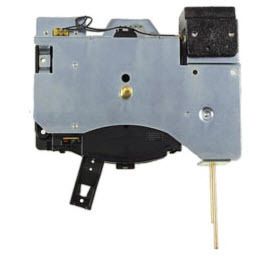Everything about Clock Movements as well as Motors
 Clock activities and motors are the actual guts of wrist watches. Clock activities and electric motors run mechanically or electronically, identifying anytime in time the angle subtended by each specific hand. These fascinating gadgets are our emphasis in this short article.
Clock activities and motors are the actual guts of wrist watches. Clock activities and electric motors run mechanically or electronically, identifying anytime in time the angle subtended by each specific hand. These fascinating gadgets are our emphasis in this short article.
Clock motors and activities are compatible terms that explain the same thing, one term perhaps favored by laypersons and also the other by tradesmen. The earliest ones operated strictly mechanically, turning a flywheel based on the force originating from a hanging weight or firmly wound springtime. A pendulum, in tandem with an escapement, worked as the regulator for the basic period of timing (generally the 2nd).
The modern-day clock activity is electronic instead of mechanical. Its heart is a quartz crystal that vibrates (reverberates) at an accurate frequency derived from the crystal geometry. A collection of numerical registers partitions the all-natural regularity right into appropriate timekeeping values.
Hence the clock motor shows the time by revolving one pin (connected to the used) a full turn every minute, an additional pin (minute hand) a full turn every hr, as well as a third pin entirely every 12 hrs or 24 Hr. These hands obviously indicate signs or numbers published on the clock face.
To attain independent rotation of all the hands, their particular pins (or shafts) have to be concentric. Clocks use equipments with the number of teeth in carefully computed ratios to get the correct cycles. Hence, the "secs" equipment triggers a tick of the "mins" gear after 60 of its own ticks, and likewise the "mins" gear triggers the "hours" equipment.
Hence standard timekeeping is accomplished, with the lengthiest cycle being 12 hrs. However, there are other frameworks and time extensions that utilize 24-hour cycles and even much longer ones than that.
Within these structures are variants, occasionally refined, that are integrated into the activity. As an example, one is commonly offered the option between useds that tick audibly and those that turn with a silent, constant sweep. The tick is a carry-over from the custom of pendulum and also escapement activity (no longer essential yet typically in demand), while the sweep used is a typical modern-day choice.
Some clock motors include grand cycles that are regular monthly or once a week. To apply them requires a 4th hand that indicates the day for a 31-day schedule month or to the day of the week. In these instances the chain of triggering up the cycle hierarchy is far more complex.
Another point to think about is whether the clock will instantly adjust to daylight conserving time or not. Some movements, especially those for digital clocks, can synchronize to the atomic clock standard. This saves needing to manually reset the watch as well as avoids a semi-permanent mis-synchronization must Congress alter the daytime savings dates.
Some clock motions are capable of displaying climate information as opposed to, or along with, revealing the time. Typical information are temperature level, barometric pressure, as well as humidity, which are gotten from sensing units instead of calculated according to a cycle. Nevertheless, weather condition activities revealing tidal information (i.e., tide level) track both lunar and also solar cycles, as well as they also incorporate impacts based upon local conditions.
how to build your own clock
Showing weather information requires at the very least an extra hand or hands, and also it might additionally need specifically calibrated dials. To earn tidal displays precise, one likewise needs to calibrate the motor itself.
We have looked at the main functions of motors; currently we wish to discuss the added or second functions that they provide. These are either built right into the device itself or are supplied as add-ons with their own buttons.
First off, typical clock activities furnish enough torque to rotate little- or medium-sized hands a cycle. (This indicates that the size of the minute hand, from pivot point to tip, goes to most six inches.) What around big clocks?
As clock hands get bigger they also get heavier. Standard activities are no longer strong enough to turn them. In these instances, the clockmaker must try to find a high torque design with the exact same collection of functions as the common variation.
We currently devote a word or 2 regarding power. Mechanical clocks owned the operations with weights or springs, and these of course had to be reset to their optimal prospective energy states occasionally. Nowadays electricity is the driving pressure, calling for power cables plugged into wall electrical outlets or batteries (e.g., C or AA cells).
Batteries have to be changed every so often, as well as electrical power ceases to flow when the power goes out. This is seldom an essential issue, though keeping accurate time is important in some conditions. A great service is to outfit the clock with both a power cable and a battery.
In this manner, one form of electricity could take control of when the various other is stopping working. A variation on this theme is the uninterruptible power supply (UPS). An additional concept, particularly valuable for outdoors, is to make use of solar clocks the rechargeable batteries for which obtain juiced through solar energy.
To have Westminster (or other patterned) chimes play in the residence, take into consideration utilizing chiming clock activities. To have the novelty of oscillating pendulums connected to your clocks, order this attribute (as a lot of activities provide it). Which is all there is to know about clock activities and also motors.

